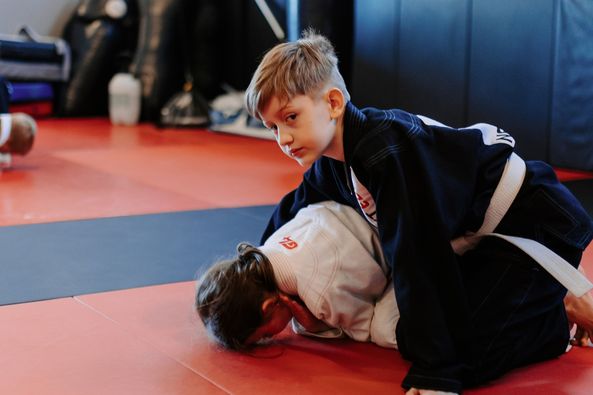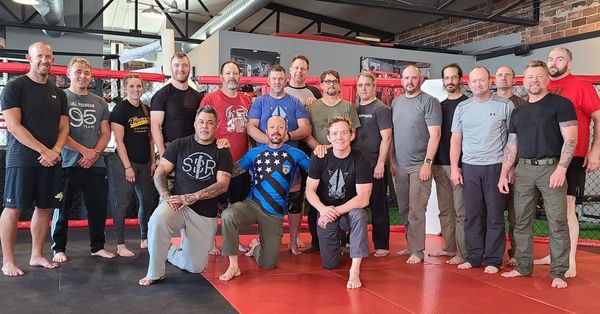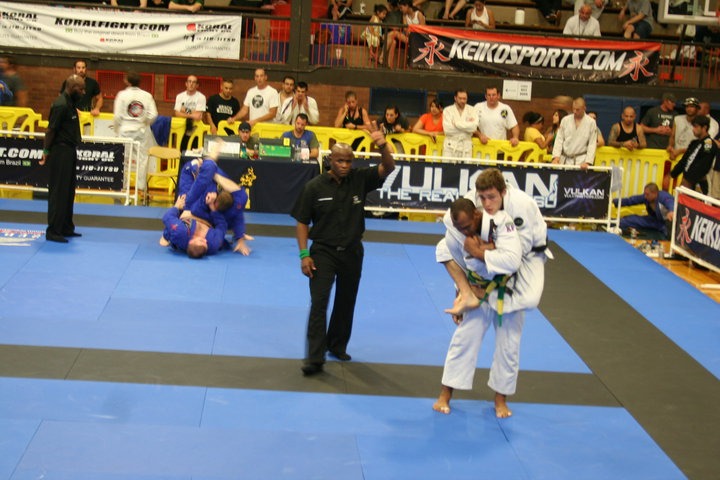Brazilian Jiu-Jitsu (BJJ) can be practiced in two main formats: gi (with a traditional kimono) and no-gi (without the kimono). Each format has its unique characteristics and techniques, leading to distinct differences between gi and no-gi BJJ. Here are three main differences:
- Grip-Based Techniques vs. Speed and Sweat Control:
- Gi BJJ (with kimono):
- Grip-based techniques are a hallmark of gi BJJ. Practitioners use the gi fabric to establish and control grips on their opponent’s collar, sleeves, pants, and belt.
- Grips play a significant role in both offense and defense. They can be used for controlling, sweeping, submitting, and setting up various techniques.
- Gi BJJ often involves intricate lapel and collar chokes and relies on leveraging the grips to establish control and submission opportunities.
- No-Gi BJJ (without kimono):
- No-gi BJJ places less emphasis on grips since there are no gi fabrics to grab onto. Instead, practitioners focus on controlling their opponent through underhooks, overhooks, and body positioning.
- Speed and agility become more critical in no-gi BJJ. Without the friction of the gi, movements can be faster, and transitions are often smoother.
- Sweat management is a crucial aspect of no-gi BJJ because sweat can make it challenging to maintain control and execute submissions. Practitioners must adapt their strategies to account for the slippery nature of no-gi grappling.
- Gi BJJ (with kimono):
- Variations in Techniques and Strategies:
- Gi BJJ (with kimono):
- Gi BJJ offers a wider array of techniques due to the added grips and friction provided by the kimono.
- Lapel and collar-based submissions, as well as guard techniques that utilize the gi, are common in this style.
- The pace of gi matches can be slightly slower, with more focus on positional control and methodical technique execution.
- No-Gi BJJ (without kimono):
- No-gi BJJ tends to have a more direct and dynamic approach, with an emphasis on controlling and submitting opponents without relying on gi grips.
- Leg locks and wrestling-based techniques play a more significant role in no-gi BJJ, as practitioners use different strategies to achieve positional dominance and secure submissions.
- The pace in no-gi matches is often faster, with greater emphasis on scrambles, takedowns, and quick transitions.
- Gi BJJ (with kimono):
- Attire and Clothing:
- Gi BJJ (with kimono):
- Practitioners wear traditional gi attire, which includes a kimono-style jacket, pants, and a belt.
- The gi provides a distinct visual identity for BJJ practitioners and offers multiple opportunities for grips and controls.
- Belt ranks are visibly displayed on the gi, allowing for easy identification of a practitioner’s skill level.
- No-Gi BJJ (without kimono):
- In no-gi BJJ, practitioners typically wear rash guards or tight-fitting athletic shirts and shorts or spats.
- Since there are no belts or kimono fabric, identifying a practitioner’s rank is not as straightforward in no-gi.
- No-gi attire is designed to minimize friction, wick away sweat, and allow for maximum movement and agility.
- Gi BJJ (with kimono):
Both gi and no-gi BJJ have their merits, and many practitioners choose to train in both formats to develop a well-rounded skill set. The choice between gi and no-gi often comes down to personal preference and training goals, whether it’s for competition, self-defense, or overall improvement in grappling skills.





+ There are no comments
Add yours